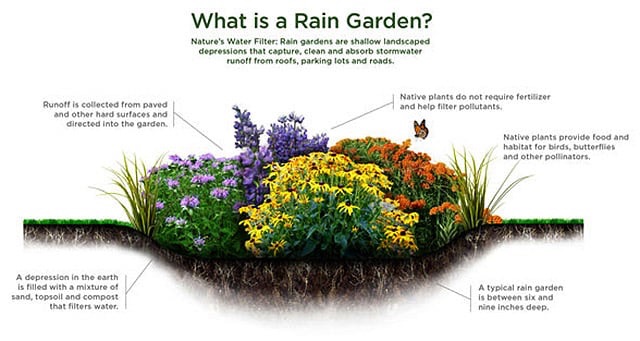In 2016, Donovan Peterson from Boy Scout Troop 103 applied for and received a grant from Minnehaha Watershed District to install rain gardens in the front of the Church. He solicited contractors and vendors for reduced rates on excavation and supplies. In November with the help of family and friends he designed and installed the first rain garden by the bell tower. The following spring of 2018, his family and friends installed the four other gardens. He asked his family and friends for donations and collected $5,187.50. Their volunteer hours were worth $8,544.84. The grant paid $11,057.07. The total cost of the project was over $22,000, which was all covered by donations, volunteers and the grant.
Going forward, the project will save the Church over $400 each year in monthly storm water fees. The Peterson family, also, paid to have a comprehensive storm water plan for the entire campus, which can be used for future projects to protect God’s creation.

What is a rain garden?
Rain gardens serves as water filters collecting polluted storm water before it reaches our waters. They are a bowl-like depression with three main components: native plants that grow long roots, loose soil that offers filtration and easy root growth, and cover, like mulch, that prevents erosion and traps moisture. During rain storms when water runs over sidewalks and roads, it picks up pollutants. Rain gardens are designed to help water soak into the ground rather than going into the storm water system and the ground acts as a natural filter to help reduce pollutants in creeks, rivers and lakes.
